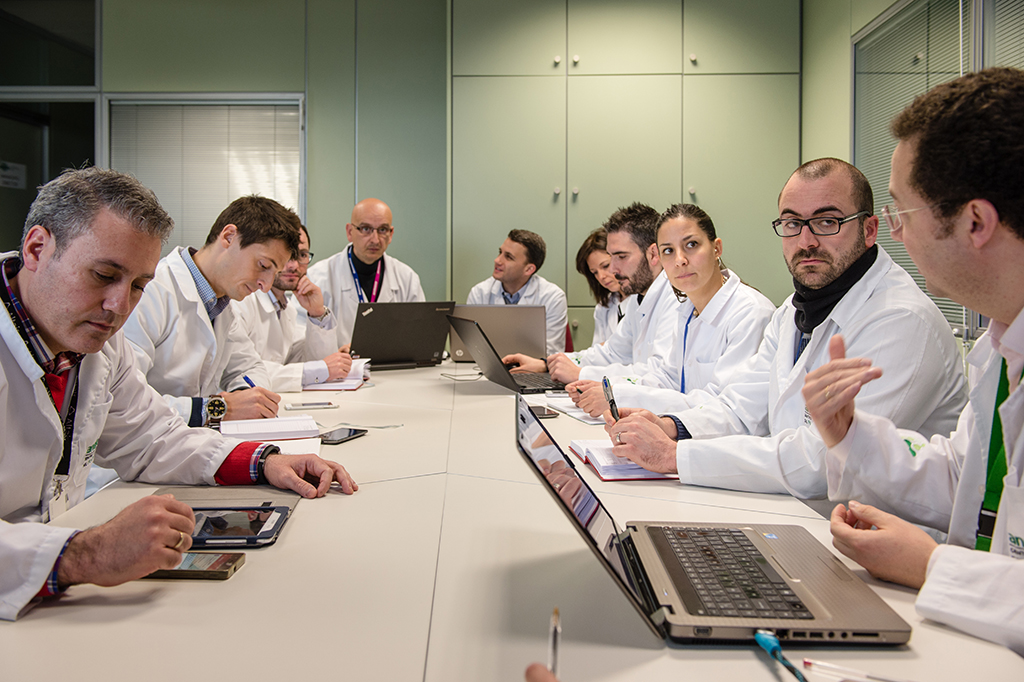Andaltec, a national technological center in Spain that performs R&D in plastics, has developed a new shape memory polymer that could be used to regenerate muscle tissue. As part of the PoliM3D project, funded by the government of the Spanish province of Andalusia, the foundation produced biocompatible polymers for 3D printing and implantation.

Andaltec’s shape memory polymer (a concept sometimes erroneously referred to as a “4D printing” material) can deform on cue in a controlled and predictable way. Able to be printed via material extrusion the polymer could be used for implants, surgical instruments and prostheses. Additionally, these thermally activated shape memory polymers have been mixed in with graphene to improve their properties through work with Manuel Melguizo’s Research Group at University of Jaén, with contributing work by Amelia Aránega’s Research Group at the same university. The materials have already demonstrated improved cell viability as well and have been tested on myoblast cell lines.
“Testing has proved that the polymer is biocompatible with this type of cells. It has also confirmed that cell growth and adherence occurs, Besides, we have compared the behaviour of the new material being non-additivated and graphene-additivated, which led to the discovery that cells contract and expand without an external stimulus, thanks to the presence of graphene derivatives.This fact confirms that this polymer could help in 3D tissue regeneration, counting with a clear application in regenerative medicine. All in all, we are conducting a new testing campaign in order to better understand the material behaviour and its possible healthcare uses,” said Antonio Peñas, Head of the PoliM3D Project.
The team thinks that parts made using these polymers could be produced close to the patient in-hospital. The foundation is looking to roll out the technology to hospitals directly and to aid them with 3D printing parts, as well.
In-hospital 3D printing has really taken off, with many facilities establishing 3D print labs. These are almost exclusively used to make visual aids, surgical planning models, or patient-specific models for education. However, it would be very convenient to print much more very close to the patient. Surgical fixation, post surgery fixation, and items like braces should be quite easy to do for many hospitals. Implants, on the other hand are quite a tall order—and rightly so.
The Hospital for Special Surgery (HSS) has a bank of Arcam machines that print implants. This is a highly specialized site that is set up to do many thousands of knee implants and similar procedures. They’re a powerhouse in surgeries in the extremities and financially very well off. So, the concrete need and the specialization combine to make their implant requirements and volumes something that is well understood.
In other, less-specialized facilities, it would be difficult to 3D print a high volume of a single type of implant. Even if implants were granted authorization on compassionate grounds or made on a case by case basis for special needs, it would be hard to justify the expense of a labs´ extra efforts into 3D printing implants in the hospital. There would need to be real volume and a continuous need for hospitals to spare the expense of going from a model to an implant.
I do believe that it will be the future but when this future will occur I can’t really tell you. Also HSS is not going alone, but working with 3D printed implant leader Lima Corporate. So, such hybrid models may well become the norm. We have yet to see if Andaltec’s material can work clinically and for what it will be used but this may be a very interesting development that could take place in your local hospital, in due course.
Subscribe to Our Email Newsletter
Stay up-to-date on all the latest news from the 3D printing industry and receive information and offers from third party vendors.
Print Services
Upload your 3D Models and get them printed quickly and efficiently.
You May Also Like
Nikon SLM Solutions Sells SLM 500 to Primary Weapon Systems to Expand Suppressor Production
Primary Weapons Systems (PWS) is a Boise, Idaho-based manufacturer of suppressors, firearms, and related components. A subsidiary of Vigilant Gear and a sister company to aftermarket Glock slide manufacturer Lone...
3DPOD 261: Tooling and Cooling for AM with Jason Murphy, NXC MFG
Jason Murphy´s NXC MFG (Next Chapter Manufacturing) is not a generalist service; instead, the company specializes in making tooling. Using LPBF and binder jet, the company produces some of the...
HP and Firestorm Labs Form Partnership to Use Multi Jet Fusion 3D Printers in Deployable Factories
HP Inc., maker of a range of additive manufacturing (AM) solutions including the Multi Jet Fusion (MJF) ecosystem, has announced a partnership with Firestorm Labs, a developer of containerized, deployable...
3D Printing News Briefs, July 2, 2025: Copper Alloys, Defense Manufacturing, & More
We’re starting off with metals in today’s 3D Printing News Briefs, as Farsoon has unveiled a large-scale AM solution for copper alloys, and Meltio used its wire-laser metal solution to...
































